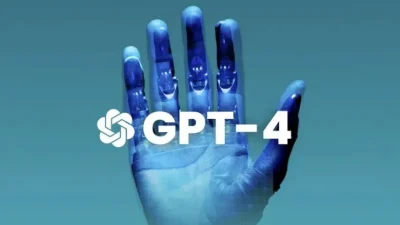The ability to control the length and level of detail in responses from GPT-4 can significantly enhance its usability across various tasks. Whether you need concise answers for quick reference or detailed analyses for comprehensive understanding, understanding how to tailor responses is essential. This guide provides step-by-step instructions to help users adapt GPT-4’s outputs to meet their specific needs effectively.
Understanding the Basics of Response Control
GPT-4 generates text based on the instructions provided in user queries. Its response length and level of detail depend largely on:
- Clarity of Instructions. Vague prompts lead to generic responses, while specific instructions yield tailored outputs.
- Prompt Length. Detailed prompts with context encourage more in-depth responses.
- Keyword Use. Using terms like “brief,” “detailed,” “bullet points,” or “examples” directly influences the structure and detail of the response.
Key Factors Influencing Response Length
- Query Complexity. Simple questions typically yield shorter responses, while multifaceted queries result in longer outputs.
- Temperature Setting. A lower temperature produces precise, factual responses, while a higher temperature generates creative and exploratory content.
- Maximum Token Limit. The token limit directly determines the maximum possible length of the response.
Crafting Prompts for Concise Responses
When a brief answer is needed, the structure of your prompt becomes crucial. Consider these strategies:
- Use Direct Language. Phrases like “Provide a summary,” “Give a brief explanation,” or “In 50 words or less” are effective.
- Set Word or Sentence Limits. Specify the desired response length explicitly. For example, “Explain the concept of photosynthesis in two sentences.”
- Focus on Specific Aspects. Narrow the scope of the query to limit the response naturally.
Example Prompt: “In 100 words or fewer, summarize the main causes of climate change.”
Advantages of Concise Responses
- Quick access to essential information.
- Ideal for use in presentations, summaries, and quick decision-making.
- Reduces the need for additional editing or filtering.
Structuring Prompts for Detailed Responses
For in-depth, comprehensive outputs, prompts should include clear instructions and relevant context. Follow these steps:
- Provide Context. Explain the purpose of the response, such as writing a report, analyzing data, or educating on a topic.
- Ask Open-Ended Questions. Encourage detailed explanations by avoiding yes/no or binary questions.
- Use Explicit Requests for Depth. Phrases like “Provide a detailed analysis,” “Discuss extensively,” or “Include examples and references” work well.
Example Prompt: “Write a detailed analysis of the economic impacts of renewable energy adoption, including examples from Europe and Asia.”
Enhancing Depth with Follow-Up Prompts
You can refine responses by asking follow-up questions or requesting additional details. For instance:
- “Can you expand on the environmental benefits of renewable energy?”
- “Include case studies of countries that successfully transitioned to renewable energy.”
Leveraging Advanced Settings for Customization
Beyond prompt structuring, users can employ advanced settings to control GPT-4’s response length and detail:
Adjusting the Temperature Parameter
- Low Temperature (0.2–0.4): Produces focused, fact-based responses.
- High Temperature (0.7–1.0): Encourages creative, varied outputs.
Setting Maximum Tokens
The maximum token limit defines the total length of the response. To ensure GPT-4 stays within desired boundaries:
- Use a high token limit for exhaustive answers (e.g., 4000 tokens).
- Use a low token limit for brief responses (e.g., 100 tokens).
Combining Parameters for Optimal Results
For example:
- Use low temperature with high token limits for in-depth technical analyses.
- Use high temperature with moderate token limits for creative brainstorming sessions.
Practical Examples of Response Customization
Scenario 1: Generating a Short Overview
Prompt: “Provide a brief overview of the French Revolution in 3 sentences.”
Result: “The French Revolution (1789–1799) was a period of social and political upheaval in France. It led to the downfall of the monarchy, the rise of Napoleon Bonaparte, and significant societal reforms. The revolution profoundly influenced modern democracies and human rights.”
Scenario 2: Writing an Extensive Historical Analysis
Prompt: “Discuss the causes and outcomes of the French Revolution in 2000 words, focusing on social, economic, and political factors.”
Result: A detailed breakdown of pre-revolutionary conditions, key events, major reforms, and long-term global impacts.
Scenario 3: Summarizing Research Findings
Prompt: “Summarize the findings of the recent IPCC climate report in 500 words.”
Result: A thorough yet concise summary highlighting key conclusions, statistical data, and policy recommendations.
Tips for Balancing Length and Detail
- Experiment with Multiple Drafts: Test different prompt phrasings to achieve the desired response length and complexity.
- Iterative Refinement: Use follow-up prompts to add depth or condense content.
- Combine Formats: Blend concise overviews with detailed sections to cater to diverse audiences.
Example: Combining Formats
- Summary: “The Industrial Revolution was a transformative period.”
- Detailed Section: “Between the 18th and 19th centuries, the Industrial Revolution fundamentally altered production methods…”
Conclusion
Mastering the ability to control GPT-4’s response length and detail empowers users to extract maximum value from this versatile tool. By crafting precise prompts, leveraging advanced settings, and refining outputs iteratively, you can tailor GPT-4’s responses to meet diverse needs, from quick summaries to in-depth analyses.






